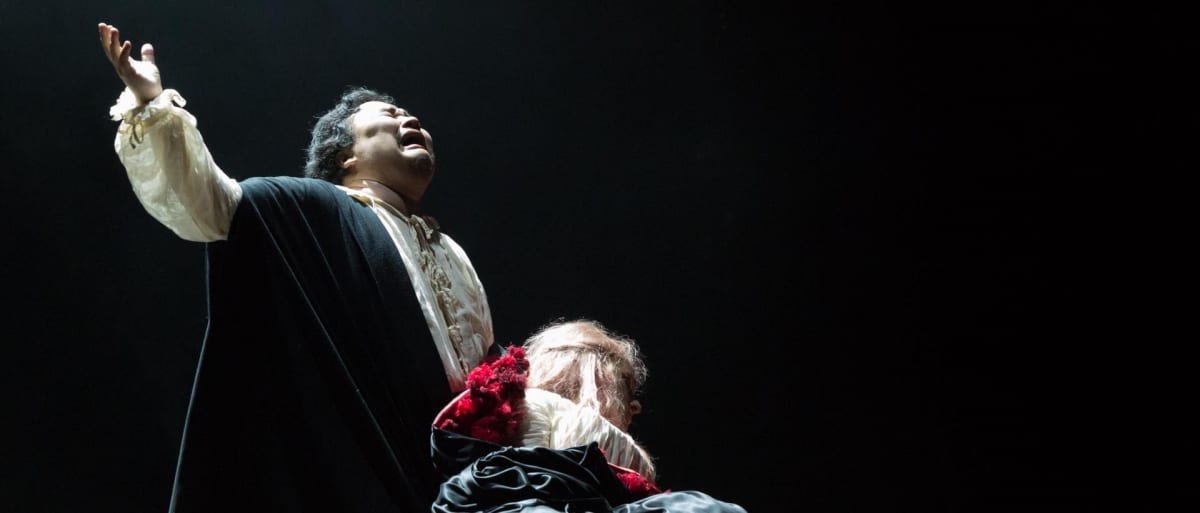The controversial Victor Hugo’s play, Le roi s’amuse, offered Verdi the opportunity to break with the Italian operatic tradition of closed forms (recitative, aria, duet) and to create a continuous musical experience from the beginning to the end. But most importantly, Verdi created a true antihero: a hunchback buffoon, implacable in his revenge against the Duke of Mantua and his court and redeemed only by the love for his daughter Gilda.
Rigoletto returns to the Teatro Massimo in Palermo after five years in a new production under the direction of the filmmaker John Turturro at his first experience as an opera director, with young singers in the major roles when I attended the performance.
The approach chosen here is minimalist: the key themes are just hinted in the staging and acting, so to let Verdi’s music capturing the audience with all its power. A sombre atmosphere is the common thread from the dark prelude, with the haunting theme of the curse, to the light scene of the party at the Duke’s palace, with a staging reminiscent of a decaying Renaissance architecture, mirroring the moral decay of the court, to the misty black background in the duet with Sparafucile and Rigoletto, evoking Mantua’s mist, and so forth until the end.
A sapient use of the colour in the costumes helps to identify the main characters: in particular the red colour of Monterone’s dress, who curses Rigoletto in the initial scene, appears under the white dress of Gilda as the opera progresses and becomes her dress in the final scene when the curse is fulfilled. Ruth Iniesta portrayed outstandingly the role of Gilda singing with confidence the coloratura parts, with sense of drama and by adding a hint of naughtiness to a character often portrayed simply as a victim. The Romanian tenor Stefan Pop interpreted credibly the womaniser Duke of Mantua thanks to a rich seductive voice. In the secondary roles of the hit man Sparafucile and his sister Maddalena, Luca Tittoto and Martina Belli were also convincing.
In contrast to these characters, which are pretty static musically and psychologically throughout the opera, Rigoletto changes constantly: the buffoon mimicking the Duke and mocking the corrupted courtiers in the opening lines becomes a caring father when interacting with his daughter and a vengeful ruthless man when wounded in his honour.
The young Mongolian baritone Amartuvshin Enkbath did a great job alternating great power and intimate lyricism as required, although he needs to grow more into the role.
The conductor Stefano Ranzani doesn’t make any concession to easy exhibitionisms and he is faithful to Verdi’s score; he conducted the orchestra with tight tempi and with great dynamism. The direction appeared in general quite static and some choices quite dubious: for example, Gilda appears from the side in the death scene rather than wrapped in a sack. Also, some crucial moments of the opera appeared quite weak: the famous aria Cortigiani vil razza dannata, where Rigoletto exposes with rage his true feelings to the fake courtiers and asserts himself as a human being, didn’t have the right emphasis.
However, on the overall it was an enjoyable performance with compelling dramatic moments and great interpreters.

